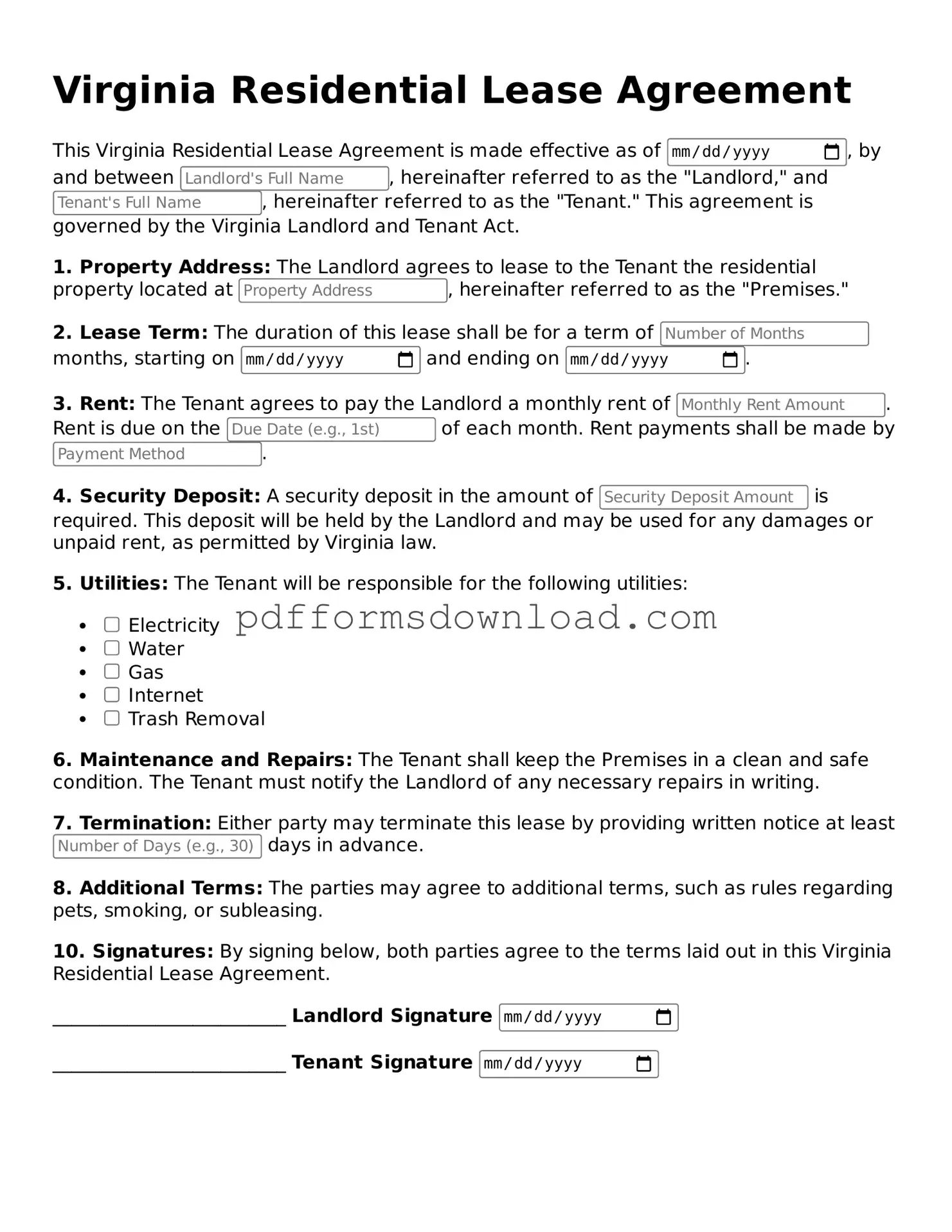What is a Virginia Residential Lease Agreement?
A Virginia Residential Lease Agreement is a legal document that outlines the terms and conditions of renting a residential property in Virginia. It establishes the rights and responsibilities of both the landlord and the tenant. This agreement typically includes details such as the rental amount, duration of the lease, security deposit, and maintenance responsibilities.
Who should use a Virginia Residential Lease Agreement?
This agreement is suitable for landlords renting out residential properties and tenants seeking to rent a home or apartment in Virginia. Both parties should carefully review the document to ensure it meets their needs and complies with state laws.
What key terms should be included in the agreement?
Essential terms include the names of the parties involved, the property address, rental amount, payment due dates, lease duration, security deposit details, maintenance responsibilities, and rules regarding pets or smoking. Clearly outlining these terms helps prevent misunderstandings.
How long is a typical lease term?
A typical lease term in Virginia can range from six months to one year. However, landlords and tenants can agree to a shorter or longer duration. It’s important to specify the lease term in the agreement to avoid confusion.
What happens if the tenant wants to break the lease early?
If a tenant wishes to break the lease early, they should refer to the lease agreement for specific terms regarding early termination. Many agreements include penalties or require notice to be given. Open communication with the landlord can also help in finding a mutually agreeable solution.
Can a landlord increase the rent during the lease term?
Generally, a landlord cannot increase rent during the lease term unless the lease agreement explicitly allows for it. Rent increases typically take effect only when a new lease term begins. Tenants should review their lease for any clauses related to rent adjustments.
What is a security deposit, and how is it handled?
A security deposit is a sum of money paid by the tenant to cover potential damages or unpaid rent. In Virginia, landlords can charge a security deposit of up to two months' rent. The agreement should specify the amount, conditions for its return, and any deductions that may be made.
What should tenants do if there are maintenance issues?
Tenants should promptly report any maintenance issues to the landlord as outlined in the lease agreement. The landlord is typically responsible for addressing repairs in a timely manner. Keeping a record of all communications regarding maintenance can be helpful for both parties.
